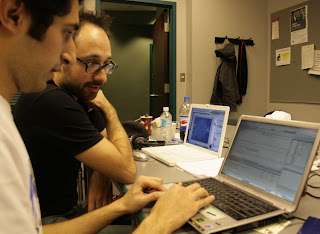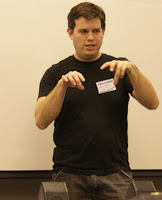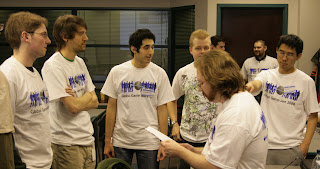
And with the uploading of One Tonne Punch's game to the Global Game Jam servers, this blog is . . . more or less . . . finished. My first effort into impromptu journalism, I hope I have been satisfactory in my coverage, and I hope those who wished to glean anything from it may find themselves better for it.
Once again, my name is Cody Church, a final year game design student from SFU Surrey. Should you wish to contact me, I can be reached through:
cchurch@sfu.ca
Now, onto the photos!
I apologize if not all of them turned out as well as they could have, but we had some rather poor lighting in the room (florescent lights just don't work, I tell 'ya!). I apologize if some of you are omitted: many photos I simply deleted because they didn't turn out at all. All the images are of a large size and resolution, as well.
I've archived each of the day's photos into 3 separate zip files, which are available from that same link. It might be a few hours from the time of this post, but they'll be there.
I will be composing a report on the event as a whole, and if you wish to give it a read when finished, but toss me an email and I'll be sure to notify you when I'm done.
And with that, I bid you all farewell. It was a pleasure watching you all toil away, and perhaps I shall see you again next year, but on the development side of the event.
Sincerely,

Cody Church









































